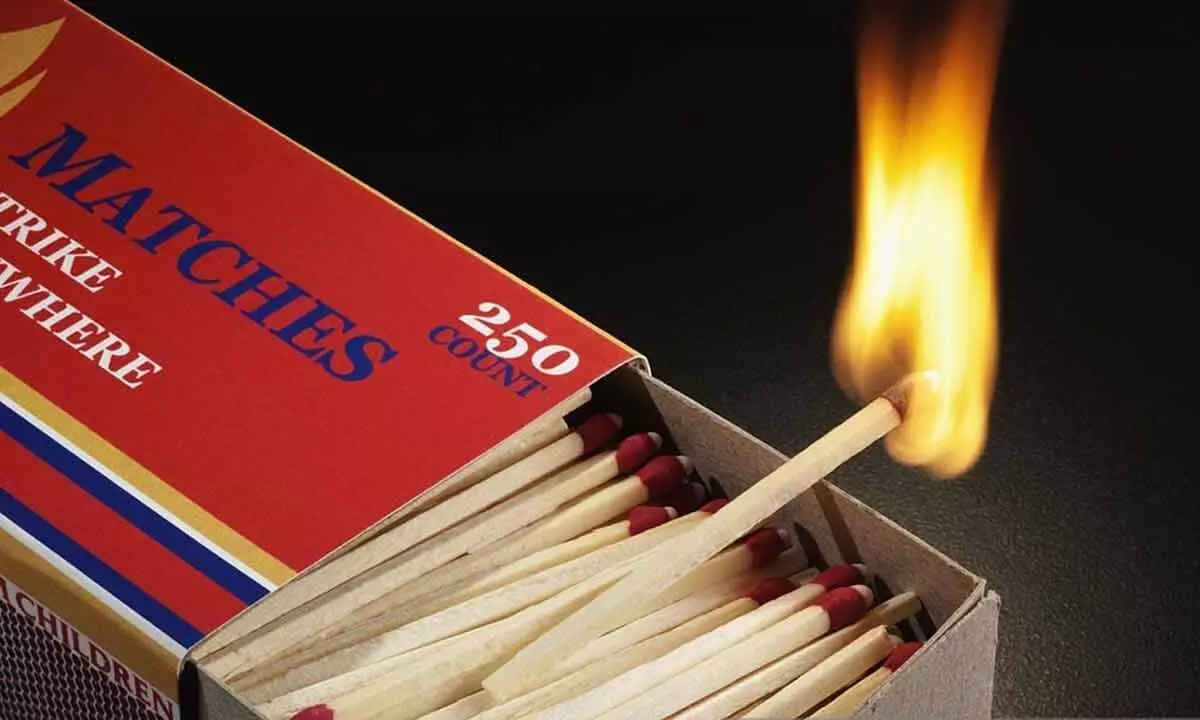History Of Matchsticks: Know its origin and why matchboxes were made

History Of Matchsticks: Know its origin and why matchboxes were made
- The origin of matchsticks can be dated back to 3500 B.C. The Egyptians developed a small pinewood stick having coating of combustible mixture of sulphur.
- The initial matchstick never looks like the one, which we presently utilize in our daily live, rather, they were very different from ones we see today.
- The modern Matchstick was invented by K. Chanel, an assistant to Professor Louis Jacques Thenard in Paris, in the year, 1805.
Origin of Matchsticks
The origin of matchsticks can be dated back to 3500 B.C. The Egyptians developed a small pinewood stick having coating of combustible mixture of sulphur. In the years ahead, nearing to 1350 to 1400, the matchstick took a new look. A cord or a wire coated with combustible chemicals were created. When brought in contact with heat, the match tend to produce a flame and was then used, to ignite other things. Some of the uses of the match sticks to light fire and crackers during celebration. Also, it is utilised in setting of canons and guns.
Matchstick can be simply defined as a wooden stick, which contains a coat of phosphorus mixture at one end, which is ignited at the rough surface of the matchbox to produce a flame.
It is very small thing, but it very important to all of us, apart from basic use of igniting things, the matchstick might often be used in varied artworks such as forming specified shapes and drawing as well as developing brainstorming puzzle and quizzes, which create wall pieces and stands.
The initial matchstick never looks like the one, which we presently utilize in our daily live, rather, they were very different from ones we see today.
Invention of modern Matchstick
The modern Matchstick was invented by K. Chanel, an assistant to Professor Louis Jacques Thenard in Paris, in the year, 1805. His invention proved to be expensive, as he used potassium chlorate, sugar, sulphur and rubber in coating the head of the match. To ignite the match, the head was dipped in sulfuric acid in order to produce chemical energy. This invention also turned out to be quite hazardous and the matchstick did not gain popularity. The matchsticks were never produced in large scale, still the basic idea had been born.
In the year, 1827, Friction matchsticks (most common matchsticks used even today) were invented by an English chemist, John Walker. The match head contained a mixture of antimony sulfide potassium cholate, starch and gum. The safety matches came next, invented by Swede Gustaf Erik Pasch in the year 1844 and improved by John Edvard. These matchsticks ignited when stoked a specific place only. These were considered to be very safe as they contained white phosphorus, which is much less combustible and it is safer to handle, when compared to initial red phosphorus.
Noiseless Matchsticks
The noiseless matchstick was invented by the chemistry student, Hungarian Janos, irinyi in the year, 1836. In this matchstick, the potassium chlorate was then replaced by lead dioxide. These matchsticks did not produce any sound on lighting and also tend to burn evenly throughout the stick. Since it is difficult to sell matchsticks individually, then came the idea of selling matchstick in boxes. Boxes were manufactured as per the size and purpose of the matches that were packed and sealed in them.
The initial boxes that were developed were plain and simple and it contained only the date of the manufacturing of the matches and their brand name. with the time, these companies might started manufacturing attractive as well as colorful matchboxes and it became reputed brands in the market. These boxes attracted people who took up the hobby of collecting varied kinds of matchboxes. At present, people tend to look out for a specific brand or company to complete their collection. The hobby seems to be awkward, but when observed carefully, the matchboxes are very eye-catching.
Great collection of Matchboxes.
Some of them have great collection of matchboxes, as few of them come from not so well do families, they find it difficult to keep them safe, to showcase it to the future generations.














